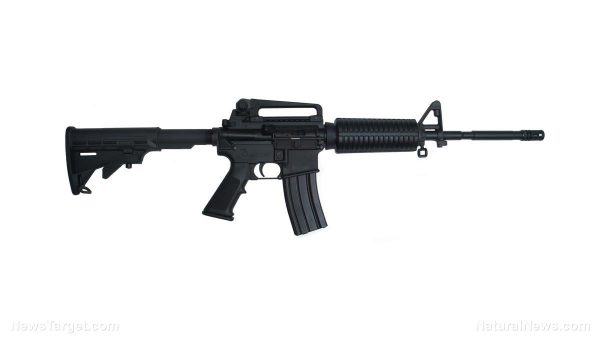In the normal course of events, very few people ever think about being in any situation where they would have to take the life of another human being. Outside of men and women in law enforcement, the military, security work and a couple of other professions, most people will never have to consider such a circumstance.
That is, unless they’re forced into it.
Police, soldiers, security officers, military contractors and the like have to come to terms with the reality that, at some point in their careers, they may have to take a life, either in defense of self, defense of other persons or defense of country, before they ever carry a weapon. But in a societal collapse situation – which could prove to be a reality at some point in our near future, given the political, cultural and social divide in our country – ordinary people will also have to decide if they will have the courage to defend themselves if or when the time comes.
Defending oneself will require obtaining and mastering firearms, and in particular a rifle that is best suited for combat. [RELATED: Advantages and disadvantages of carrying a concealed handgun in a fanny pack]
Unless you’ve got tens of thousands of dollars to pay for automatic weapons, the ammunition they use and the federal licensure required to own them, you’re going to have to settle for semi-automatic rifles commonly available on the market. Truth be told, under most conditions, one of these will do just fine.
So, let’s examine some of the more popular semi-automatic rifles that you can easily obtain, learn to shoot and master. Some are widely available, but when all is said and done, they may not be your best choice:
— AR-15: There are numerous civilian versions of the U.S. military’s AR-series of rifles, and most of them are decent quality and realistically priced. The AR-15 models use .223/5.56 ammunition which is also very easy to find and stockpile. It, too, is competitively priced, though for a while during the Obama administration it was difficult to obtain because Americans were concerned about efforts to limit access to so-called “assault rifles,” which the AR-series is considered (wrongly) to be part of.
Also, AR-series rifles are very accurate and extremely adaptable. There are many types of optical sites on the market that range from fairly cheap in price to very expensive, leaving you a number of choices. AR-series rifles are also accurate without using an optic device, and come with 20- or 30-round magazines.
One thing: Carbines (the shorter version) are less accurate at longer ranges (250–300 yards) than the longer, standard AR-15, but they are lighter to carry and easier to handle in an urban environment.
Some drawbacks to the AR-15 rifles and carbines include price (yes, they are affordable but not cheap) and the fact that they are more complex, which makes them more of a challenge for new AR-15 owners to learn to break down and clean. Your best bet is to find someone who’s been in the military or who has owned an AR-series rifle for some time to show you how the process works. Also, these weapons can be prone to jamming if the ammunition is old or dirty.
— AK-47/74: One of the most popular alternatives to the AR-series rifles are the AK-47 lookalikes. These rifles are generally much less expensive than the AR’s, are less complex when it comes to breaking them down for cleaning, and jam much less frequently, on average. Also, AK-series rifles fire a bigger, heavier round (7.62x39mm), which gives you more stopping power. They also come with 10, 20 or 30-round magazines.
Drawbacks include slower muzzle velocity (2,350 feet per second on average) than the ARs (3,300 feet per second on average), less accuracy with the rifle’s own sites (no optics), and less ammunition availability. [RELATED: Eight embarrassing gun technique mistakes amateurs make]
— SKS: This rifle is also very affordable, and like its Eastern European counterpart, fires the 7.62x39mm round for better stopping power. And it is very simply to operate.
However, drawbacks include less accuracy, less adaptability, and it is slower to load (it does not have a detachable magazine, only a fixed one).
— M-14 type: There are a number of variations of the M-14 series of rifles, and most of them are good. Some platoons and route clearance units fighting in Afghanistan were issued these, and by all accounts they perform well. The rifle fires a much heavier round – .308 – and has a good muzzle velocity (about 2,800 fps). The rate of fire is good too, at around 700 rounds per minute.
These are heavy rifles, however, and will wear down an average-sized guy who isn’t used to carrying a rifle everywhere. Also, the ammunition isn’t rare but it isn’t common, either. Plus, these rifles can be a bit tricky to break down, though it’s not hard to clean the barrel and magazine well.
There are many other rifle choices – all with pros and cons – but not every choice is the best choice for you and your situation. You need to make sure you can be reliably accurate with your rifle, easily obtain ammunition for it, easily clean and perform maintenance on it, and above all, trust it not to fail when you need it most.
J.D. Heyes is a senior writer for NaturalNews.com and NewsTarget.com, as well as editor of The National Sentinel.
Sources:


